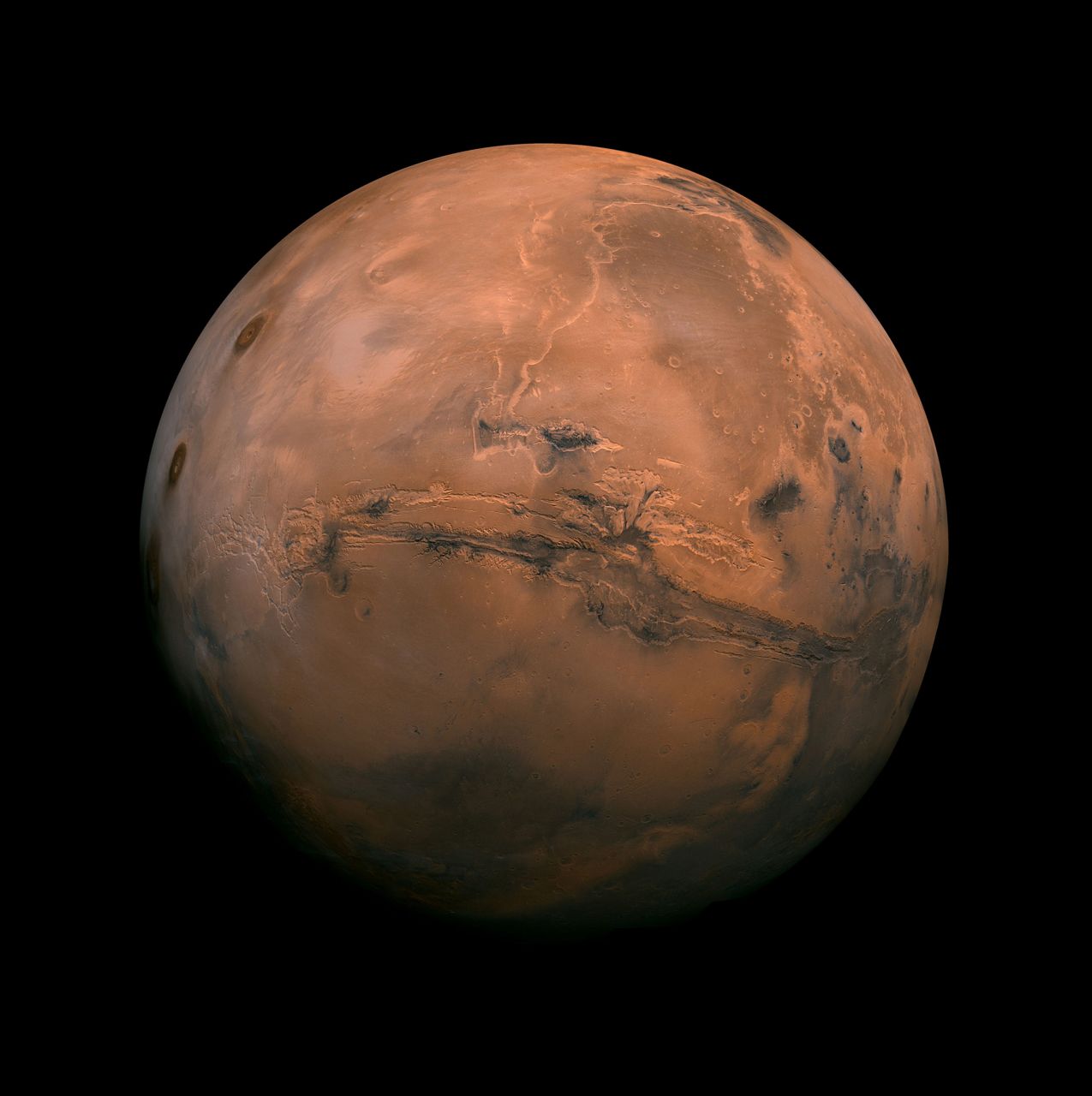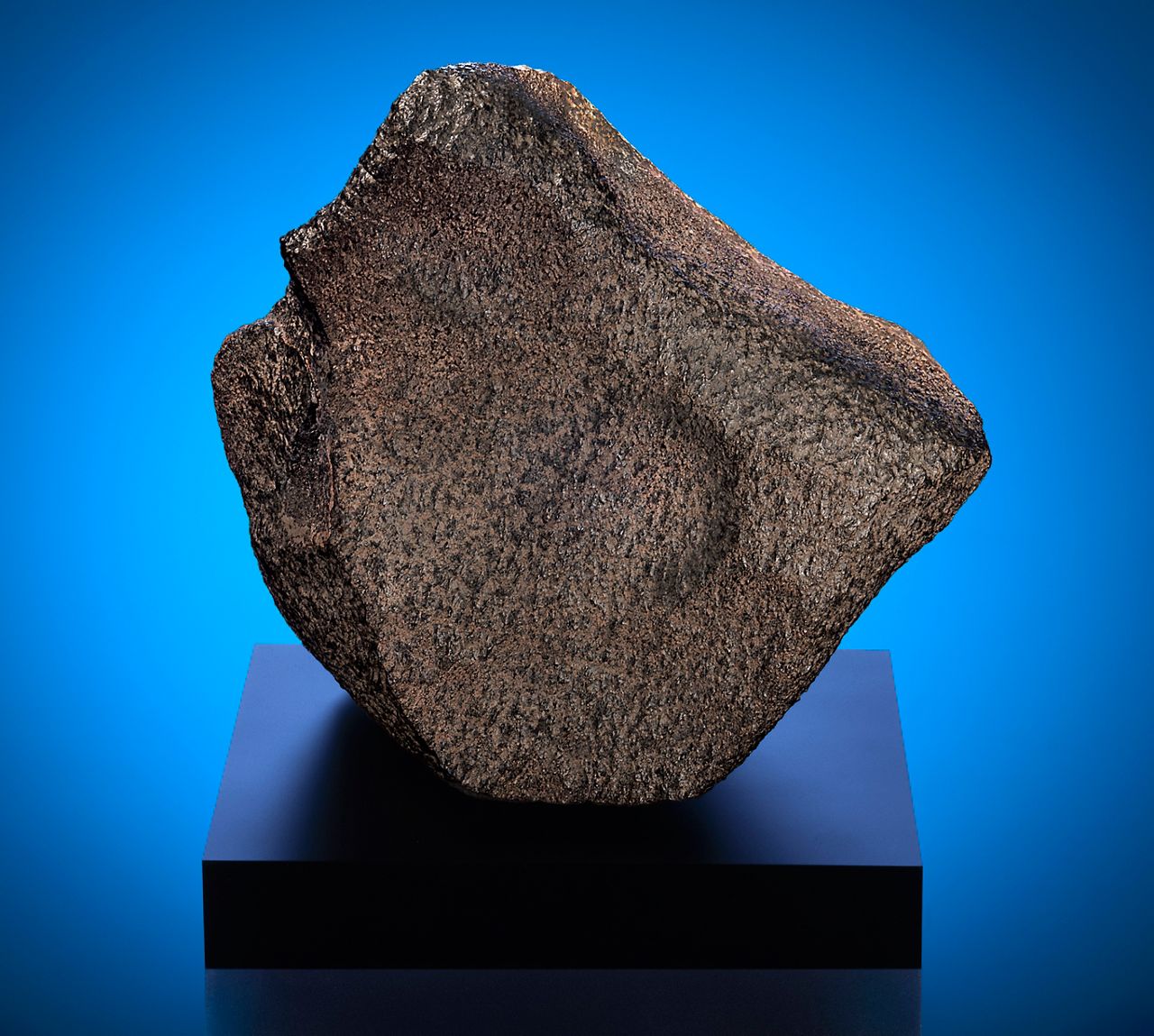While humanity and popular culture continue to debate and explore the idea of out-of-this-world invaders coming to Earth from other planets, one thing scientists are certain of is that rocks from other planets — Mars in particular — have been here for quite some time.
Now, a recently-discovered meteorite composed entirely of Martian stone, adorned with the name “Taodenni 002,” is starring in the permanent collection of the Maine Mineral and Gem Museum in Bethel. The stone will be on display starting today as part of the museum’s reopening to the public. The 32-pound chunk is the largest piece of the red planet known to humanity other than what’s on Mars itself, according to Barbra Barrett, the museum’s executive director.
“It’s certainly the largest piece of Mars that we have, or anyone has,” she said.
The irregularly-shaped stone measures approximately nine inches wide, 10 inches long and 6.5 inches tall. Barrett said the rock’s name comes from where it was found, Taoudenni, Mali, a salt-mining community in an African desert about 400 miles north of Timbuktu.
Dr. Carl Agee, director of the institute of meteoritics at the University of New Mexico, helped identify the stone. Including Taodenni 002, there are 311 identified Martian stones on our planet, according to Agee, but none this large.
“Some of them are as small as a grain of sand,” he said.
To find anything from Mars that weighs more than a few pounds, Agee said, is quite remarkable.
“That’s way, way outside of the average,” he said.
A meteorite’s origin, Agee said, depends on its composition. Taodenni 002 is made up of pyroxene, olivine and maskelynite, an element based on feldspar. One might find all of these elements on Earth or many other planets, he said. Gravity, exposure to radiation, ambient temperature and other factors, however, vary from planet to planet, and that makes the otherwise common elements combine and bond in ways that are unique to their planet of origin.
Years ago, Agee said, scientists identified the chemical-bonding signature associated with rocks of Martian origin, and his tests revealed that Taodenni 002 bears the same signature. Agee said the stone, an igneous rock, was probably first formed from a volcano on Mars, and had likely been sitting on the planet’s surface for several million years when a meteor struck the planet so hard that the impact flung Taodenni 002 into space.
Eventually, Agee said, the rock drifted into Earth’s gravity and fell through the atmosphere, but since no one reported seeing it fall, exactly when that happened is impossible to determine. Given how little damage the stone appears to have suffered from exposure to the elements here on Earth, Agee estimated it hasn’t been on the surface of our planet for more than 1,000 years.
“In terms of geological events, it’s not a very long time,” he said.
Barrett said connections between museum officials and those who discovered the stone helped the museum to acquire it. The museum, she said, is relatively new to the state, even by non-geological standards. Dr. Lawrence Stifler started the museum as a nonprofit back in 2011, after acquiring a large parcel of land for preservation in Albany, Maine — about six miles from Bethel. The land he acquired included the Bumpus Mine, an area known for producing unusual barrel crystals, many of which are currently on display at the American Museum of Natural History.

The mine piqued Stifler’s interest, Barrett said, and prompted the acquisition of rare minerals that eventually allowed the museum to first open to the public in December 2019. It had to close in 2020 due to the pandemic, but Barrett said an unveiling of Taodenni 002 will accompany today’s museum’s reopening.
It is not the museum’s only unique offering. Barrett said the museum also boasts the largest piece of moonstone on Earth, along with other rock and mineral samples.
Barrett said visitors will be able to do more than look. With a museum docents’ permission, she said, visitors will be able to touch and even hold some of the museum’s samples, including Taodenni 002.
“It brings out the kid in all of us,” she said.
Barrett said in the short time the museum has been open, its collection has drawn quite a bit of attention.
“Visitors are coming from all over the country to see what we’ve built,” she said



